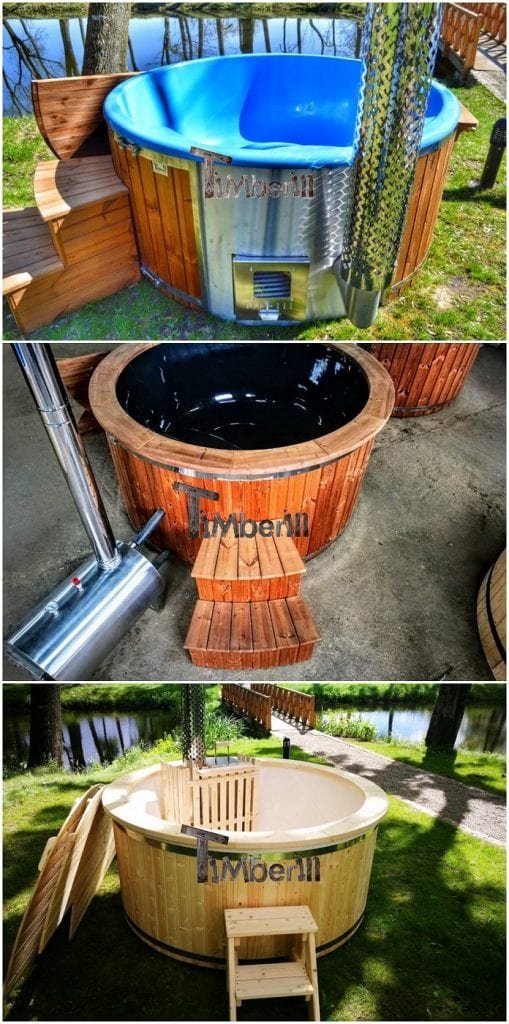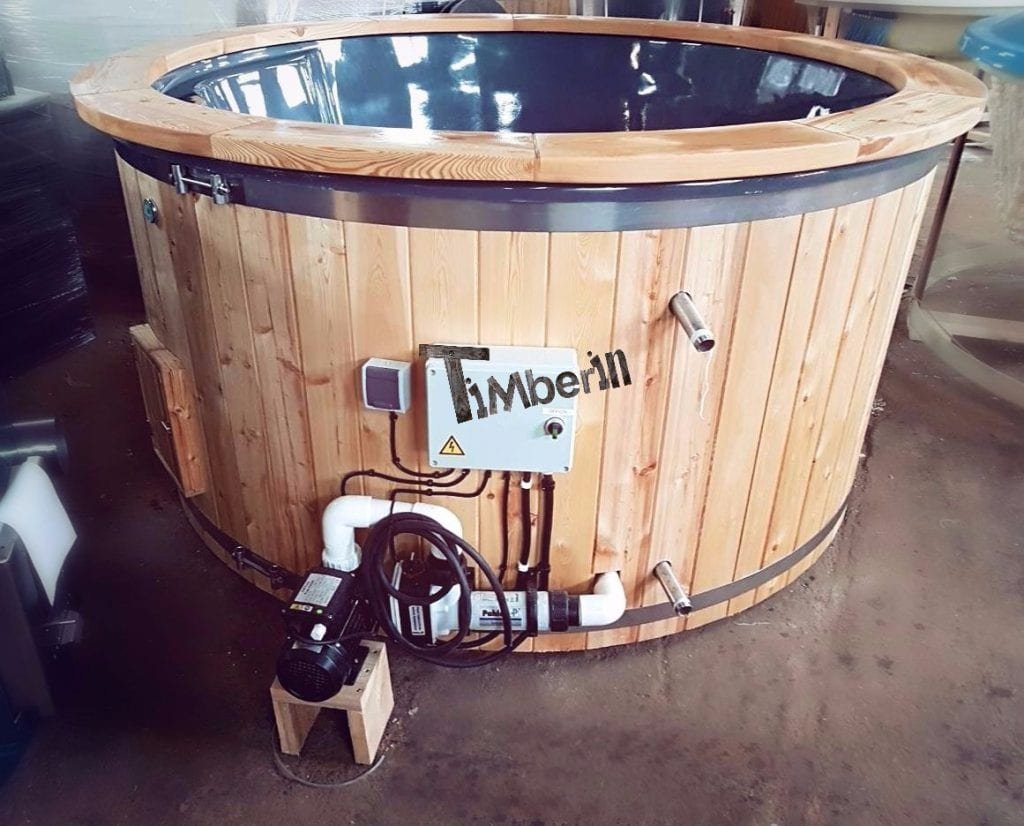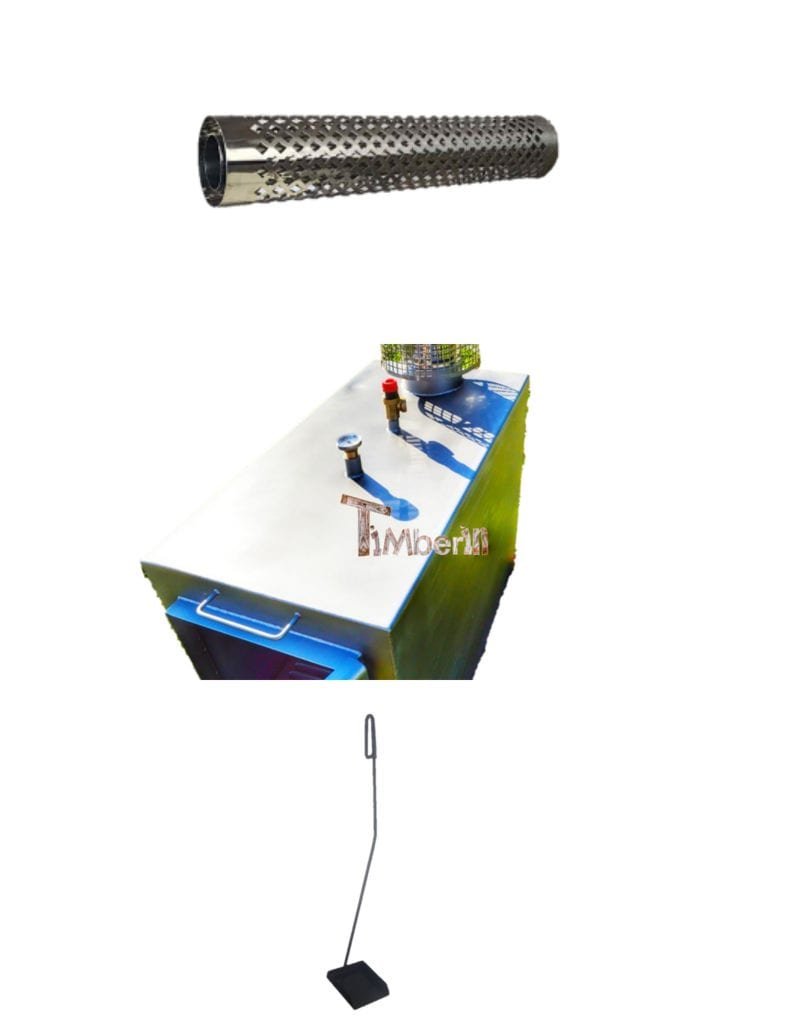When choosing a heater for your new hot tub, there are many things to consider before making a decision. Here we will discuss everything in detail to help you understand the pros and cons of two different types of heaters: wood-fired hot tub heater and electric heater for a hot tub. First of all, think of the heating source that you have better access to, whether it is wood or electricity. Moreover, in some cases, due to the local regulations fumes are not allowed, therefore do not leave this question the last. So let’s get into the comparison step by step.
Wood-fired heater`s efficiency and costs compared to the electric heater
Heating the outdoor hot tub with wood is the traditional way that does not require any additional supply, just wood. We have three different types of wood-burning heaters, internal, external and integrated, as you see they are placed and connected differently, even though the heating time is very similar. Smaller tubs will heat up more quickly, especially if you choose a more powerful heater, whereas bigger tubs require a bigger heater and a longer time to warm up. Efficiency in wood-burning heaters also depends on the wood density, therefore hardwood is better than softwood because it has 50% more density than softwood. Important is that no matter what type of wood you use for your wood-burning hot tub stove, the wood must be dried. Wood that has not been dried, wastes much of the energy as it has to remove water from the log when burning.

The efficiency and costs of the electric heater do not have so much ambiguity as the energy used can be calculated precisely. The electric heater uses 6kW per hour, therefore you just need to know how many hours per day you used it, and the price of kWh in your country. Let us say the heater was on for 3 hours, so you used 18kWh that day, multiply by the cost of electricity per kWh and you have your price per day. Then, how much does a wood-fired heater cost? This is a tricky aspect as it highly depends on the country, access to the wood and its price. Moreover, the amount of wood burned cannot be exact depending on a wood type, also it is a little bit challenging to keep the temperature the same for a longer time, or not to overheat the water. Therefore, it is highly possible that you will use more wood than necessary, at least at the beginning, whereas the electric heater has a thermostat where you can adjust the temperature.
Pros and cons of the electric heater for hot tubs
The electric heater requires less maintenance while heating the outdoor hot tub because there is no need to add wood to the oven, control the fire and to clean it after using the tub. We offer electric heaters from 3 to 18 kW, it can be adjusted to single-phase power (3 and 6 kW) or three-phase power (more than 6 kW). However, due to the differences among countries laws, one should consider consulting a local electrician. An electric heater is a perfect option if there is a lack of wood in your area. There is no chimney, no smoke, no need to clean the oven afterwards. In general, the heating process is shorter compared to the wood-fired oven, however, these tubs completely depend on the electricity and must be close to connections. The heater itself takes a little space and comes equipped with a wooden cover. Depending on the size of your pool, you may consider a combination of wood-fired and electric heaters. This is the fastest way to warm up the water and there is always a possibility to use only one of them.

Pros and cons of the wood-fired heater
Some advantages may seem like disadvantages when it comes to wood-fired hot tub heaters, as it completely depends on a point of view and a place you live. The main feature is that no additional sources are necessary in order to warm up the tub, just wood. The process of wood burning in traditional heaters has a certain charm as you are the only one taking care of fire and your hot tub. We offer 3 wood-fired hot tub heater types and 6 designs for everyone’s needs. Internal ones heat the water quicker but require more space inside the tub. On the other hand, if you do not have enough space around the tub to place the external heater, you have two options. Internal, possible for every model except ofuro, or integrated oven, only for wellness models. Having an internal or integrated heater requires less water as well, therefore, running costs will be lower in the long term. Wood-fired heaters require more effort when heating up the tub than an electric heater. One must always add some wood and clean the ashes after using the tub. Chimney and smoke are inseparable from a wood-fired heater, therefore please carefully check the requirements in your area as these types of heaters may be forbidden or have to fit certain requirements.
Wood-fired heater accessories
Here you will find certain accessories for some of the wood-fired heaters. Chimney protection is available to every type and design as all of them have chimneys. Consider having this especially if you have children. Stainless steel cover around the heater may be chosen with an internal heater, it protects the water from outside debris, falling leaves, etc. and also helps to keep the warmth inside the tub, as hot tub lid does not cover the whole area when there is a heater inside. Ash shovel and rake are optional but very convenient. The shape is designed according to the heater type as you can see in the pictures. The last but not the least accessories – thermometer and pressure valve. These can be added to all designs of the external heater. The thermometer shows the temperature, whereas the pressure valve protects the heater from pressure changes and possible damages.





I am looking for an electric-powered wooden hot tub. Please can you let me know if there is somewhere I can view your products?
Thank you
Hello, Peter,
thank you for your comment. All our products you can find over here: https://www.woodenhottubsale.co.uk/
Have a nice day,
greetings,
TimberIN team